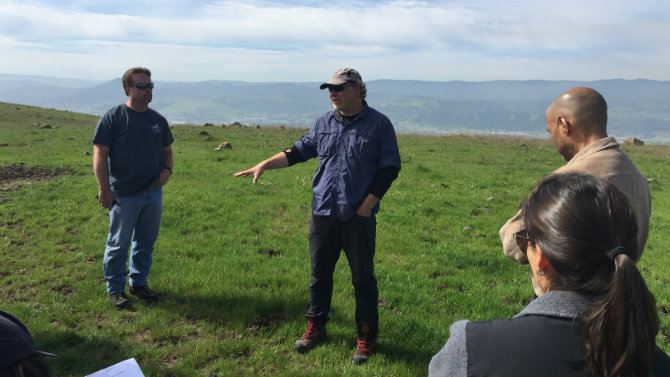You may be surprised to know that VTA is encouraging the rebirth of native plants and animals in the hills above South Santa Clara County’s Coyote Valley. A recent staff tour of the 500+ acre VTA-owned property revealed the proliferation of flowers like the California Goldfield and the Common Fiddleneck, and the endangered Bay Checkerspot Butterfly thanks to the land management efforts of the Santa Clara Valley Open Space Authority in partnership with VTA.
The Backstory
In 2004, VTA purchased the site nestled between U.S. Highway 101 and Anderson Reservoir as mitigation to several nearby transportation infrastructure projects. Construction for the widening of Highway 101, the Highway 85/101 Interchange and the Bailey Ave. Interchange had the potential to impact the nearby flora and fauna, altering the type of vegetation and the rare Serpentine soil needed to propagate the Bay Checkerspot’s habitat on Coyote Ridge, east of 101.
Along the two hour tour, Open Space technician Derek Neumann pointed out the various spots of land that are seeing new growth of native California vegetation and the healthy grazing of cattle and Tule Elk, which were seen leisurely grazing a few bluffs over from the dirt road spanning the property.

VTA designs highway, transit, and facilities projects to avoid or minimize permanent impacts to sensitive habitats and habitats that are essential for the survival of special status animals and plants to the maximum extent possible. When impacts are unavoidable, VTA mitigates or compensates for the loss of habitats by preserving, enhancing, restoring, or creating habitats near the project site in coordination with the appropriate resource agencies, like the Open Space Authority.
Learn more about VTA’s habitat restoration and conservation programs.
